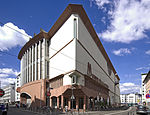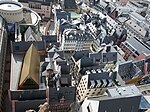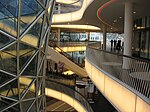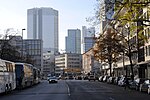Altstadt (Frankfurt am Main)
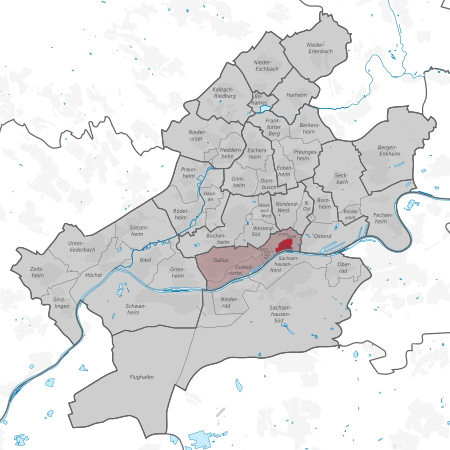
The Altstadt (old town) is a quarter (Stadtteil) of Frankfurt am Main, Germany. It is part of the Ortsbezirk Innenstadt I. The Altstadt is located on the northern Main river bank. It is completely surrounded by the Innenstadt district, Frankfurt's present-day city centre. On the opposite side of the Main is the district of Sachsenhausen. The historic old town of Frankfurt was one of the largest half-timbered towns in Germany until the extensive destruction in World War II with its around 1250 half-timbered houses, most of which date from the Middle Ages. It was one of the most important tourist attractions for Germany. The historic old town was largely destroyed by the air raids on Frankfurt am Main in 1944. The streets and the entire district are predominantly characterized by quickly and easily erected buildings from the 1950s and 60s. A handful of the most important historic buildings, churches and squares were restored or reconstructed, especially around the main square, the Römerberg. However, from 2012 to 2018, a small section of the old town was reconstructed. A construction project known as the Dom-Römer project, restored a small section of the old town between the Imperial Cathedral and the Römer town hall, following a decision by the city council in 2007. A few former streets and squares that once stood in the area were rebuilt, most notably the historical coronation route of German emperors through the old town from the cathedral.
Excerpt from the Wikipedia article Altstadt (Frankfurt am Main) (License: CC BY-SA 3.0, Authors, Images).Altstadt (Frankfurt am Main)
Töngesgasse, Frankfurt Altstadt (Innenstadt 1)
Geographical coordinates (GPS) Address Nearby Places Show on map
Geographical coordinates (GPS)
| Latitude | Longitude |
|---|---|
| N 50.113611111111 ° | E 8.6844444444444 ° |
Address
Parkhaus Konstablerwache
Töngesgasse 6
60311 Frankfurt, Altstadt (Innenstadt 1, Innenstadt)
Hesse, Germany
Open on Google Maps

